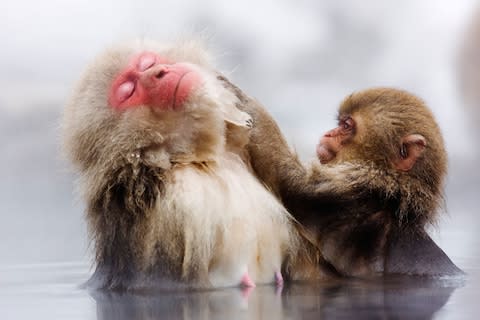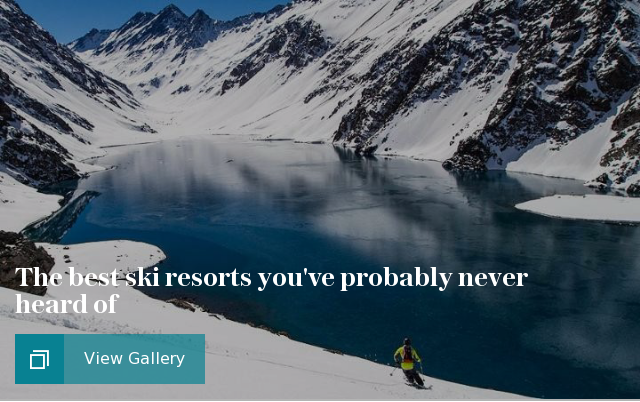The Japanese island with lightest, fluffiest snow known to humankind

The northern Japanese island of Hokkaido is renowned for having vast quantities of the lightest, fluffiest snow known to humankind. In its snowiest years, resorts such as Niseko, Rusutsu and Furano can receive up to 17m of the white stuff. To put that in perspective, the annual average of perennial Brit favourite Val d’Isère is between four and six metres.
Over the past 10 years, this deep cover has attracted film-makers, photographers and increasing numbers of British and North American skiers to what many consider is the holy grail of powder skiing. But accessing terrain away from pisted runs has always been a grey area, with some resorts actively enforcing a ban while others turn a blind eye.
This was certainly the case three years ago when I last visited, but much has changed since then. Many of the key resorts have made the situation clearer and, in one case, offer a guiding service to take you to previously banned areas. Rusutsu is renowned for its well-spaced trees, but before the 2014/15 season, anything away from the pisted runs was technically out of bounds.
“So many people were going into the trees that there were more people there than on the runs,” says Paul Hanlon, international manager of Rusutsu’s ski school. “The ski patrol didn’t know what to do.”
Kiroro delivers the goods. @kirororesort #hokkaido #japan @SkiSafari #japanroadtrip
A post shared by Telegraph Ski and Snowboard (@telegraphskisnowboard) on Feb 21, 2017 at 6:41am PST
The resort requested permission from the Forestry Office – a government body that looks after all woodland – to let skiers and snowboarders access the terrain, effectively making it inbounds. The request was granted with one caveat – it cannot be actively promoted on the resort’s website, suggesting the practice is permitted but not condoned.
Rusutsu. Fresh snow. What's not to love. #rusutsuresort-official #japanroadtrip @SkiSafari
A post shared by Telegraph Ski and Snowboard (@telegraphskisnowboard) on Feb 20, 2017 at 5:06am PST
In a further step, this season Rusutsu has introduced an inbounds guiding programme with qualified ISIA instructors.
There is still out of bounds terrain that tempts the more adventurous, notably one area on a ridge between the resort’s West mountain and Shiribetsu mountain. The 15-20 minute hike accesses an excellent area, but can be prone to avalanche. Hanlon suggests that a backcountry gate could be introduced here in future to allow access, but at your own risk.
We want to create a sustainable backcountry culture
Mark Wyckmans
Furano used to be renowned for strictly enforcing a policy that prohibited any skiing away from designated runs, but that all changed in the 2013/14 season. Fencing that used to line either sides of the pistes was removed, and you can now ski wherever you want within the resort boundary. Long-term resident Scott Tovey says, “As a result of the change in policy we have been inundated by European side-country skiers.”
The resort has also introduced six backcountry access gates.
The snowiest resort in Hokkaido, Kiroro, has adopted a very clear-cut approach. International marketing assistant Mark Wyckmans says, “Right from the start we want to create a sustainable backcountry culture.”
This means if you ski away from the piste you have to go through one of the backcountry access gates. In Japan, if you ski in the backcountry, you're supposed to fill in a plan of your route and give it to the local police office and the forestry office. In reality, many don’t.

In Kiroro, the rule is enforced but they make the process simple. The forms are at the lift office, where you hand them in once completed. After you’ve finished for the day, you need to check back in. Failure to do so could be costly – if a search and rescue party is sent to find you, you’ll pick up the tab. And there's a very strict policy on people jumping ropes within the resort boundary to access unpisted terrain. If you do it and a ski patrol sees you, they will take your pass away.
Last season Kiroro launched a Mountain Club membership scheme. For 1,000 yen a day (£7) you supply your route plan an hour earlier than non-members (8am rather than 9am) to be first in line for fresh powder and have exclusive access to an in-bounds, ungroomed run until midday.
This more clear-cut approach to backcountry skiing might be the way forward, but it’s in contrast to what’s still happening in Hokkaido’s largest and most successful resort, Niseko. Here things don’t appear to have changed much in the past three years. Despite rules clearly stating you should not duck ropes, it still seems commonplace, and although there is an extensive network of backcountry gates, I suspect few skiers and snowboarders are filling in the required paperwork to use them.

So while the situation is less grey in Hokkaido, it’s still far from black and white. One thing is for sure, though – the appeal of Hokkaido is only growing. Rob Stanford from the Warren Smith Ski Academy, which has been running courses in Niseko for the previous 10 years, says, “We’ve seen demand grow year on year and this season for the first time we ran two trips – 35 people in the first week, 42 in the second.”
The Telegraph has teamed up with specialist operator Ski Safari (01273 224068; skisafari.com) to offer a 10 night hosted trip to Japan’s top powder resorts on the northern island of Hokkaido – Niskeo, Rusutsu, Kiroro, Furano and Asahidake – from £3,750 per person. The trip will be led by Japan ski expert and ex-racer Kenji Matsuzawa and The Telegraph’s ski editor Henry Druce. They will be on hand to make sure everything runs smoothly and ski with you on the slopes. Price includes return flights with BA and JAL from London Heathrow to Sapporo via Tokyo, transfers and b&b accommodation, all lift passes, three days of professional off piste guiding, day trips to Hokkaido’s snowiest resort Kiroro, and to the island’s highest mountain and live volcano Asahidake, welcome reception and end of trip party with great prizes. Read the full details and book here.

